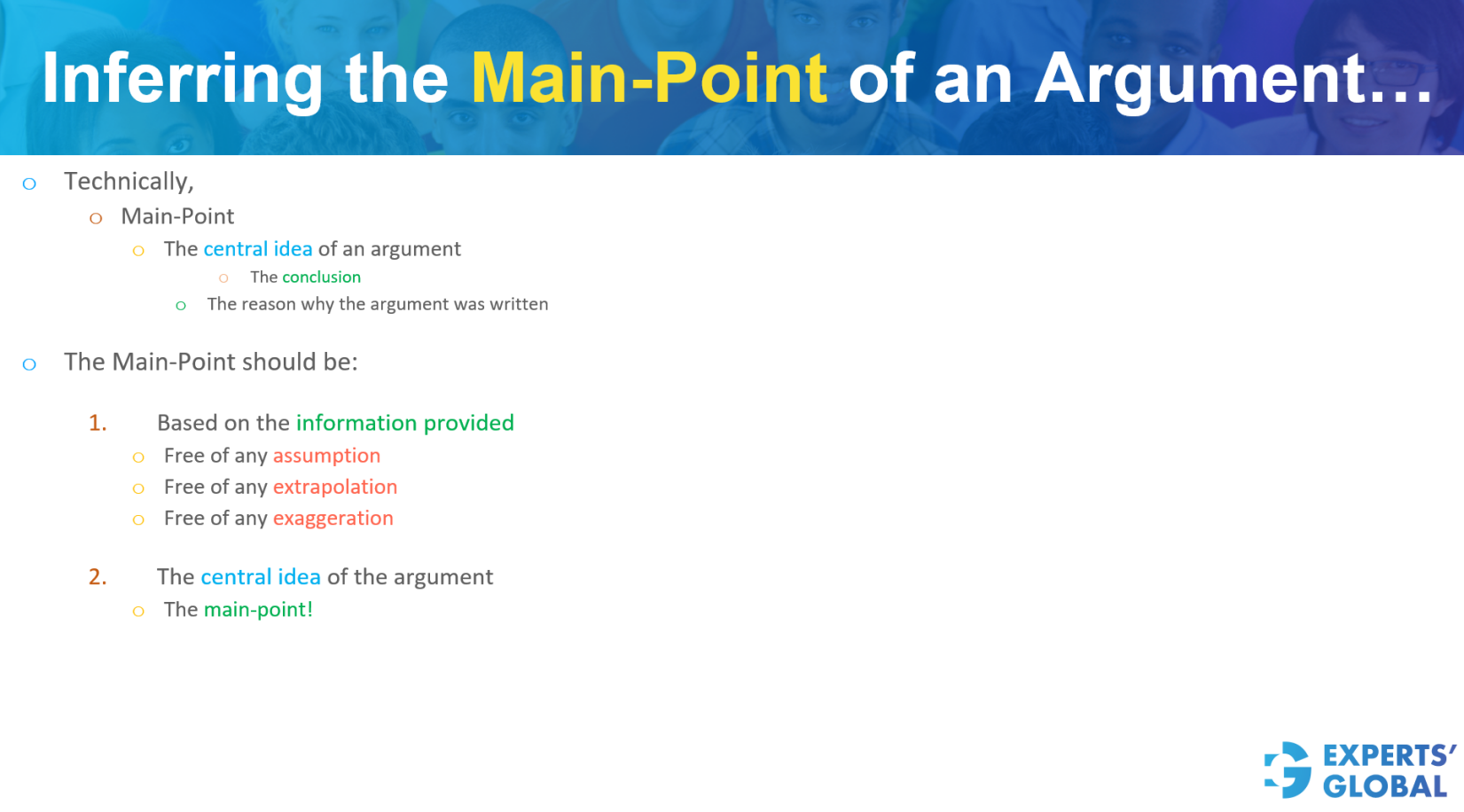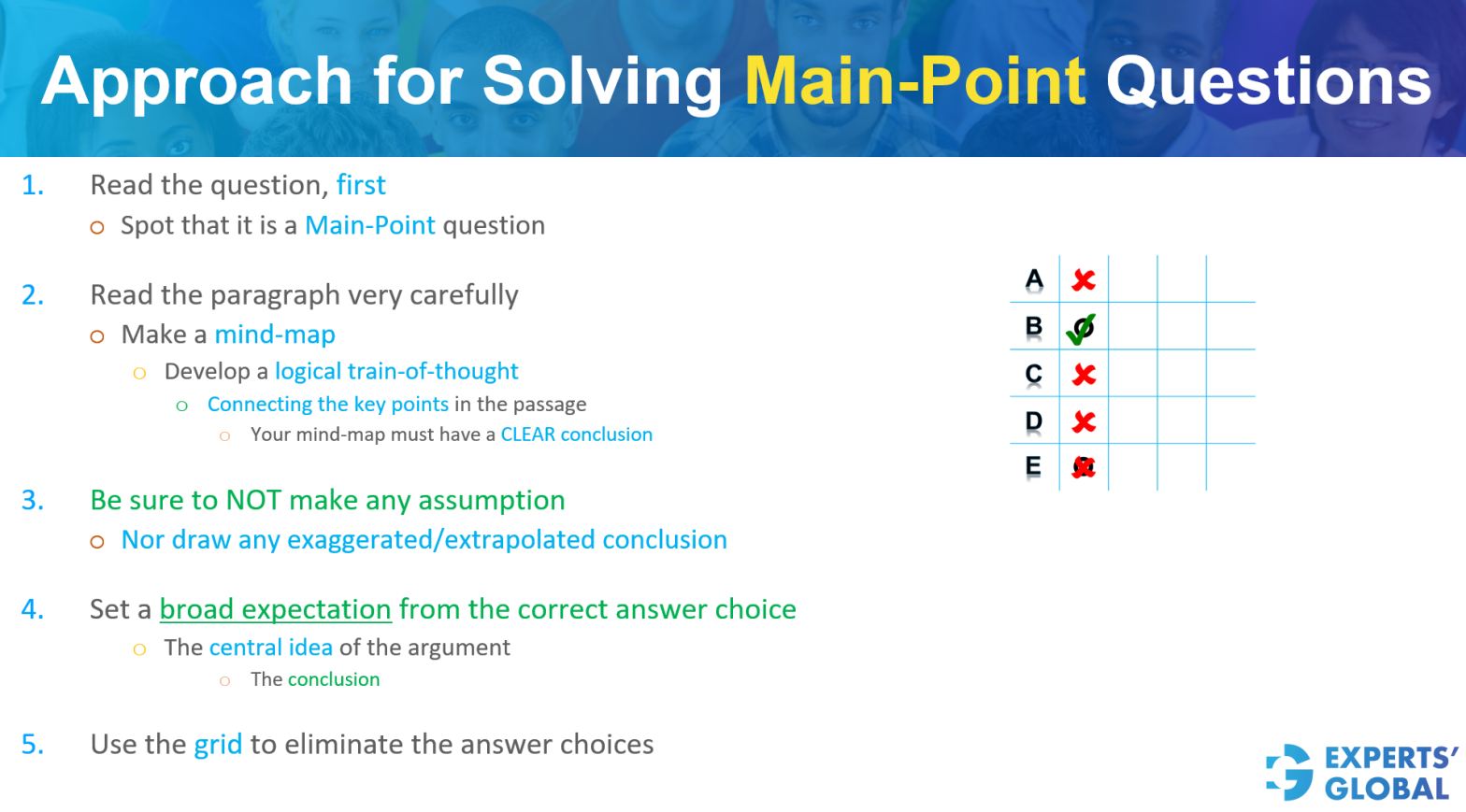Invest 30 seconds...
...for what may lead to a life altering association!
Help Line
- +91.8800.2828.00 (IND)
- 1030-1830 Hrs IST, Mon-Sat
- support@expertsglobal.com
...for what may lead to a life altering association!


Critical Reasoning Main Point or Conclusion questions ask you to identify the central point that the argument is trying to prove, the one idea that everything else in the passage is meant to support. They help you learn to separate core claims from background details and to see the structure of reasoning with clarity. Steady practice with this question type is an essential part of any comprehensive GMAT preparation course. This page offers you an organized subtopic wise playlist, along with a few worked examples, for efficient preparation of this concept.

Conclusion is the main idea of an argument – the reason why the argument was written. This overview explains how to recognize a conclusion in GMAT conclusion based Critical Reasoning: it is the main claim that the premises are designed to support. Build a brief mental map separating facts from opinions, ask yourself what the argument is ultimately trying to prove, and favor balanced, accurate wording over extreme language. Keep in mind that the conclusion may appear anywhere in the passage and may not be explicitly signposted. The short video below presents the method, shows it in real use, and prepares you to apply it in GMAT drills, sectional tests, and full-length GMAT mock tests.


High quality CR Main Point questions are not available in large numbers. Among the limited, genuinely strong sources are the official practice materials released by GMAC and the Experts’ Global GMAT course. Within the Experts’ Global GMAT online preparation course, every CR Main Point question appears on an exact GMAT like user interface that includes all the real exam tools and features. You work through more than 30 CR Main Point / Conclusion questions in quizzes and also take 15 full length GMAT mock tests that include several CR Main Point questions in roughly the same spread and proportion in which they appear on the actual GMAT.
Remember…

All the best!